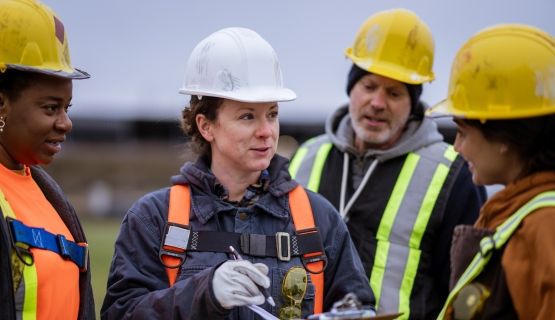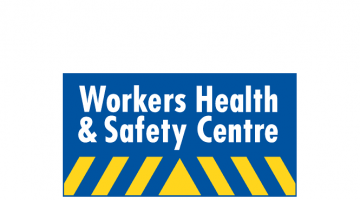Illness/injury prevention
IWH has a long history of conducting research to provide practical guidance to employers, workers, OHS professionals and regulators about what works and what doesn’t in injury or illness prevention. This research targets the injury and illness prevention practices of workplaces, as well as the programs developed by governments, health and safety associations and others to support and motivate workplaces to adopt effective practices.
Featured

At Work article
Differences in firm-level AI use for health and safety
To what extent are Canadian workplaces using artificial intelligence (AI) to help support workers’ health and safety? And what do these workplaces have in common? An IWH study surveyed firms across Ontario and British Columbia to find out.
Published: October 8, 2025

Impact case study
Saskatchewan’s construction safety group uses IWH tool to improve safety culture
This case study details how the Saskatchewan Construction Safety Association (SCSA) members have been analyzing IWH-OPM scores to adjust their safety practices and how SCSA has been using the data to tailor their outreach.
Published: February 10, 2025
Project
Project
MSD prevention: a practical implementation guide for Newfoundland and Labrador
Status: Completed 2020
Project
Project
Occupational health and safety performance in Ontario's unionized construction sector
A previous Institute study found that, during the period 2006-2012, unionized contractors in Ontario's industrial, commercial and institutional sector had higher no-lost-time claim rates and lower lost-time claim rates than their non-unionized counterparts, suggesting unionized contractors may do better at encouraging injury reporting and reducing injury risk. A new IWH study is replicating the methods of this previous study for the time period 2012-2017.
Status: Completed 2020
Project
Journal article
Journal article
Gender differences in injuries attributed to workplace violence in Ontario 2002-2015
Published: Occupational and Environmental Medicine, January 2019

IWH in the media
Research on silica exposure controls finds PPE comes at a cost
Research estimating cancers averted and intervention costs of two silica control measures offers an important new perspective on the control of occupational cancers. Among the compelling findings, researchers concluded that personal protective equipment (PPE) is not the most cost-effective method of protecting workers from silica exposures, calling into question the common practice of providing PPE to workers exposed to hazardous materials.
Published: Workers Health & Safety Centre, December 2018
Journal article
Journal article
Larger workplaces, people-oriented culture, and specific industry sectors are associated with co-occurring health protection and wellness activities
Published: International Journal of Environmental Research and Public Health, December 2018

Impact case study
Safety culture framework in Manitoba incorporates IWH expertise, tools
SAFE Work Manitoba incorporated IWH expertise and tools into the framework of its ambitious safety culture initiative, which aims to make workplace injury prevention a genuine priority among all segments of the population across the province.
Published: November 2018

At Work article
Slight improvements seen in workplace psychosocial conditions over 10 years
How have psychosocial work conditions changed in Canada over a 10-year time frame? Data from Statscan surveys suggest a slight improvement, but the IWH researchers behind the analysis are cautious in their interpretations.
Published: November 2018

At Work article
Calculating the costs of employers’ work-related injury prevention efforts in Ontario
You often hear OHS professionals and advocates talk about the costs of work-related injuries. But what about the costs of preventing the injuries? An IWH research team recently set out to calculate employer OHS investments in Ontario.
Published: November 2018
Journal article
Journal article
The effect of active and passive occupational health and safety (OHS) training on OHS awareness and empowerment to participate in injury prevention among workers in Ontario and British Columbia (Canada)
Published: Safety Science, October 2018